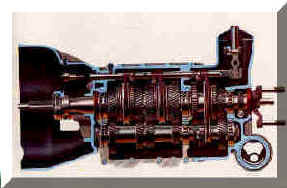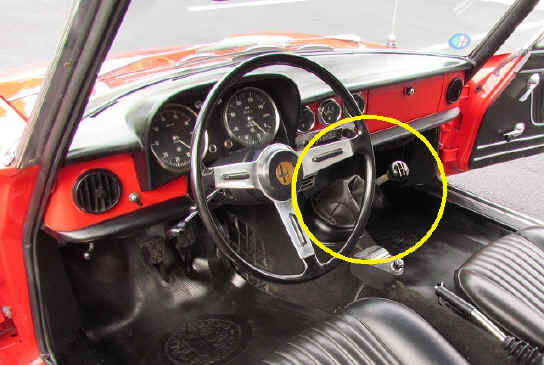
Via Veloce by Wille R. www.veloce.se since November 1995 and still here.
Alfa Romeo Duetto 1966 - 1969 FAQ --![]()
To have five speeds to play with in 1966 was very much like the feeling of having six gears some three decades later. Quite simply, only a handful of expensive sports cars boasted a five-speed transmission, so this standard in the Duetto was a strong selling point. It was also one of the most pleasant and effective gearboxes of its day, with slick synchronised gear-changes and a positive feel.

The transmission basically derived from the 1962 Giulia and would remain essentially unaltered for the whole of the Spider’s production life. The lever connected directly to the transmission shift rails, giving a precision that remote systems could never match, and also setting the unusual angle of the gear lever for decades to come. The positioning of the lever was responsible for the rather peculiar up-and-down motion.

The new synchromesh cones, fitted on all five gears, were manufactured according to Porsche patents and very much improved over previous, often-criticised Alfa Romeo transmissions. There was strong spring loading to the 3rd - 4th gear plane, and the gears were set out in a conventional ‘H’ pattern with fifth to the upper right and reverse to the lower right.
The ratios were particularly well chosen, being close-set and sporting. Third gear, for example, was good for well over 70mph. Fourth gear represented direct drive, while fifth – in theory an overdrive gear – was still usefully flexible, as it equated to a relatively low 19.6mph at 1000rpm on a very low-ratio 4.555:1 (9/41) hypoid bevel final drive. Acceleration was therefore emphasised over pure top speed (which came in at around 115mph).
The exact gear ratios were as follows:
1st 3.304
2nd 1.988
3rd 1.355
4th 1.000
5th 0.790
Rev 3.010
Road speed at 1000rpm in forward gears was as follows:
5th 19.6mph
4th 15.5mph
3rd 11.5mph
2nd 7.8mph
1st 5.1mph
A Fichtel & Sachs single dry-plate clutch was standard, measuring 8 inches in diameter and incorporating progressive engagement. The pressure plate was mechanically actuated by a ring of nine coil springs.
In order to keep the transmission tunnel low, drive to the rear wheels was via a divided propshaft (either Fabbri or Spica brand) with a flexible rubber coupling on the front section and two universal joints on the rear section, linked to the gearbox and final drive unit. The final drive casing was in light alloy to improve cooling and reduce weight, and incorporated a small separate oil sump. To transmit the power to the rear wheels, semi-floating half-shafts were employed in the rear axle.
If you have any comments, please send an E-mail
#